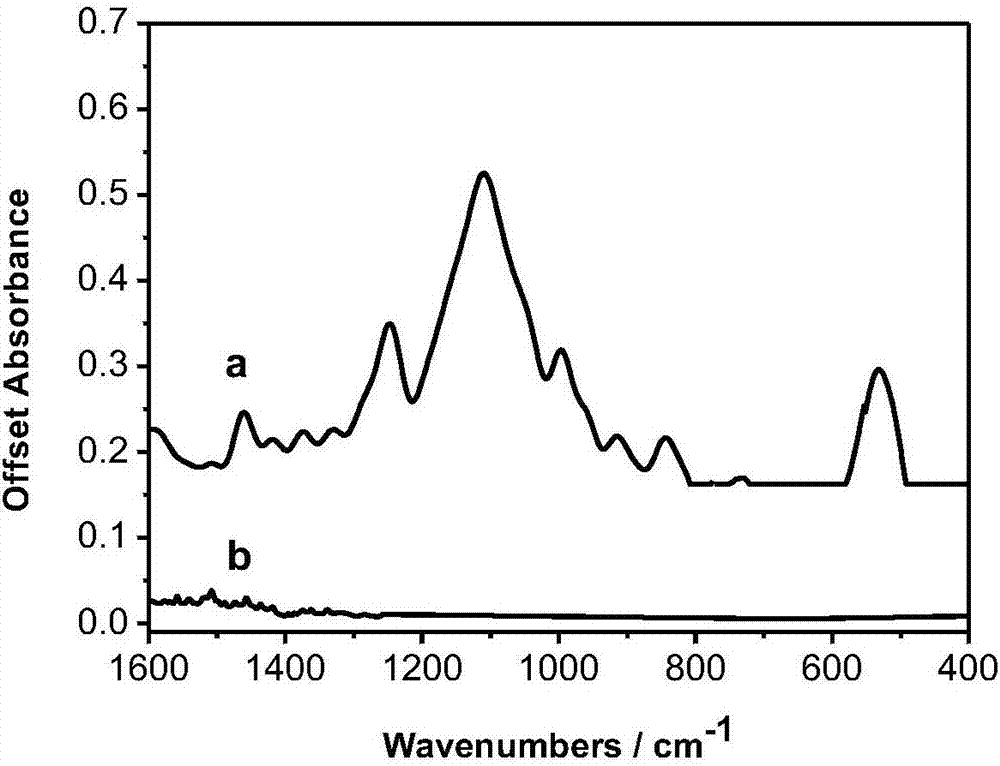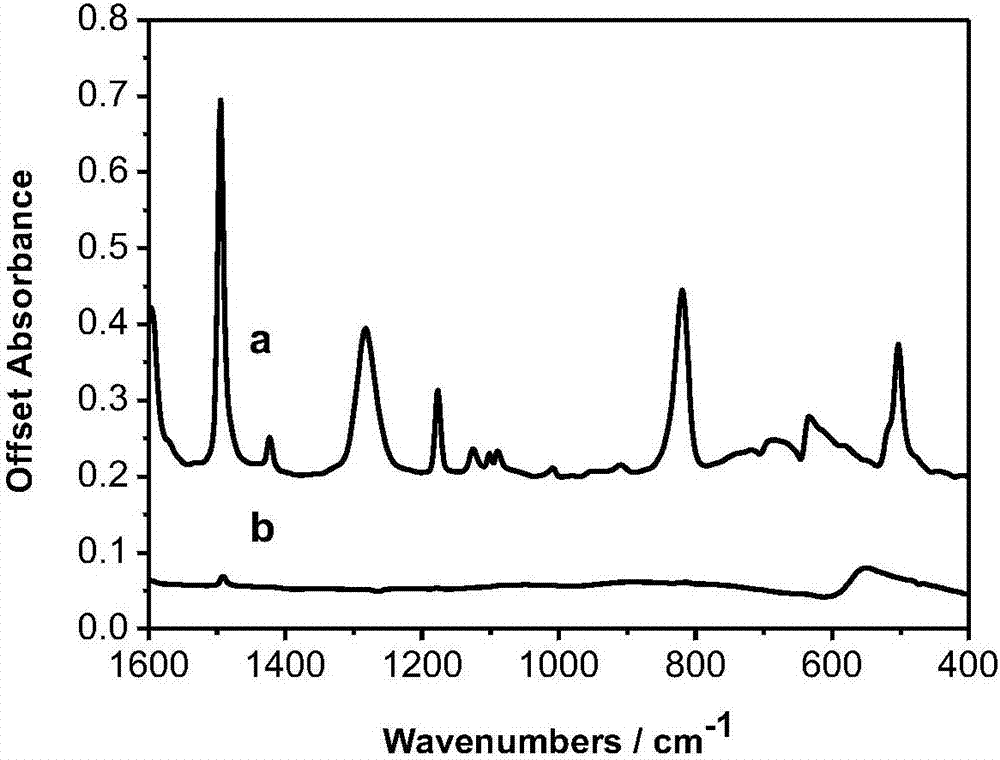Method for carrying out surface-enhanced infrared absorption spectroscopy (SEIRAS) detection by adopting nanoscale aluminium-doped zinc oxide (AZO) as substrate
An aluminum-doped zinc oxide, nano-scale technology, applied in the measurement of color/spectral characteristics, etc., can solve the problems of weak response, inter-band and in-band loss, low infrared absorption and utilization efficiency, etc., to improve the enhancement ability and widen the range. Effect
- Summary
- Abstract
- Description
- Claims
- Application Information
AI Technical Summary
Problems solved by technology
Method used
Image
Examples
Embodiment 1
[0044] Preparation, surface modification and SEIRAS detection of AZO nanoparticle sol with a mole fraction of 7%.
[0045] 1. Preparation of AZO nanoparticle sol:
[0046] (1) Measure 60 mL of deionized water into the beaker with a graduated cylinder, then weigh 40 mg of zinc oxide powder and a certain mass of aluminum isopropoxide (the mole fraction accounts for 7% of the zinc oxide) with a balance, and mix the two into the beaker .
[0047] (2) It was magnetically stirred for 6 hours. Then the resultant was filtered, washed three times with ethanol and deionized water successively, dried, and ground for 8 minutes with an agate mortar.
[0048] (3) Finally, heat treatment was carried out at 900° C. in an air atmosphere in a muffle furnace for 3 hours, and cooled to room temperature with the furnace to obtain 0.065 g of AZO nanoparticle powder. Further, the obtained AZO nanoparticle powder was dissolved in 130 mL of deionized water to obtain an AZO nanoparticle sol with a c...
Embodiment 2
[0054] Preparation, surface modification and SEIRAS detection of AZO nanoparticles with a mole fraction of 7%.
[0055]1. Preparation of AZO nanoparticles:
[0056] (1) Measure 40mL of ethylene glycol with a graduated cylinder, add it to a beaker, weigh 40mg of zinc nitrate hexahydrate and aluminum nitrate nonahydrate with a mole fraction of 7% of zinc nitrate hexahydrate with a balance, add it to the beaker for dissolution, and obtain solution A .
[0057] (2) Weigh 10 mg of sodium hydroxide solid with a balance, and dissolve it in 10 mL of deionized water. Then, add sodium hydroxide solution to solution A and mix well.
[0058] (3) Transfer the solution in the beaker to a 50 mL polytetrafluoroethylene-lined reaction kettle, put it into a constant temperature oven, and react at 160° C. for 24 hours. Thereafter, the reactor was taken out and cooled to room temperature.
[0059] (4) The reaction kettle was opened, the product was centrifuged, and the precipitate was washed ...
Embodiment 3
[0065] Preparation, surface modification and SEIRAS detection of AZO nanoparticle sol with a mole fraction of 7%.
[0066] 1. Preparation of AZO nanoparticle sol:
[0067] Method is with embodiment 1.
[0068] 2. Surface modification of probe molecules:
[0069] Add 0.01 g of the prepared AZO nanoparticle powder into 10 mL of 10 -6 mol / L ethanol solution of p-mercaptobenzoic acid (MBA), stirred vigorously, and reacted in the dark at room temperature for 6 hours; the product was centrifuged, washed with ethanol and centrifuged three times to remove unadsorbed probe molecules to obtain surface modified AZO nanoparticle powder with probe molecules.
[0070] 3. SEIRAS test of surface-modified AZO nanoparticles:
[0071] The AZO nanoparticles prepared above are used as the SEIRAS substrate, and the monomolecular layer p-mercaptobenzoic acid (MBA) probe molecules adsorbed on its surface are detected by SEIRAS, and the potassium bromide tableting method is used for testing, and t...
PUM
| Property | Measurement | Unit |
|---|---|---|
| Concentration | aaaaa | aaaaa |
Abstract
Description
Claims
Application Information
 Login to View More
Login to View More - R&D
- Intellectual Property
- Life Sciences
- Materials
- Tech Scout
- Unparalleled Data Quality
- Higher Quality Content
- 60% Fewer Hallucinations
Browse by: Latest US Patents, China's latest patents, Technical Efficacy Thesaurus, Application Domain, Technology Topic, Popular Technical Reports.
© 2025 PatSnap. All rights reserved.Legal|Privacy policy|Modern Slavery Act Transparency Statement|Sitemap|About US| Contact US: help@patsnap.com



